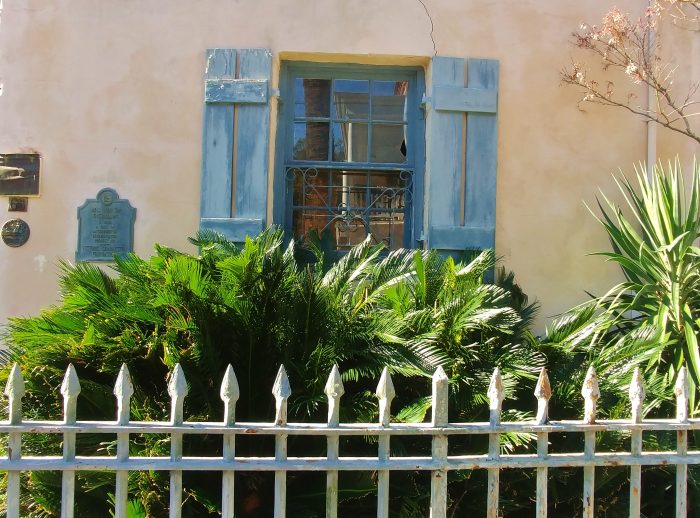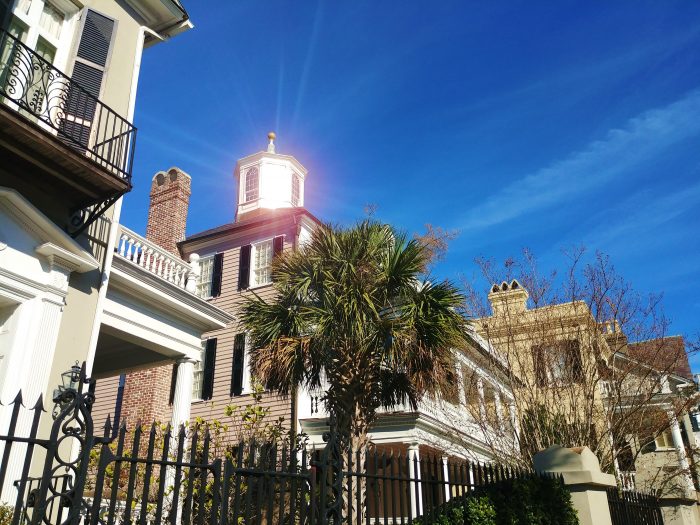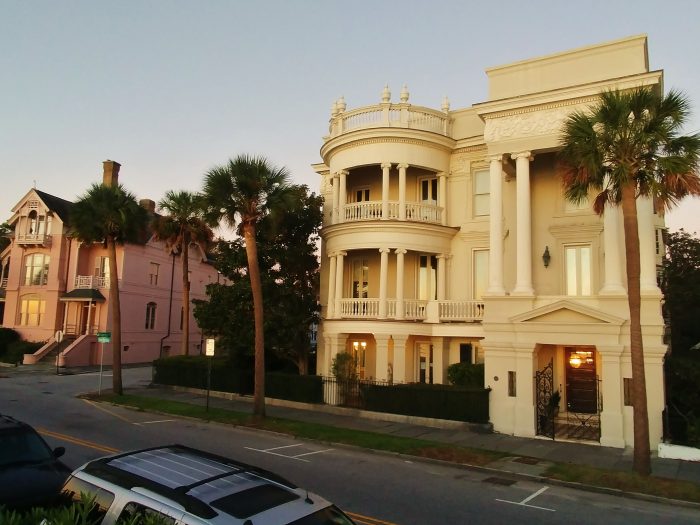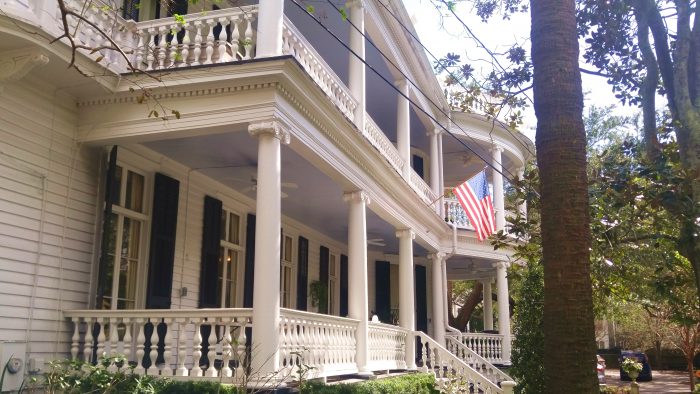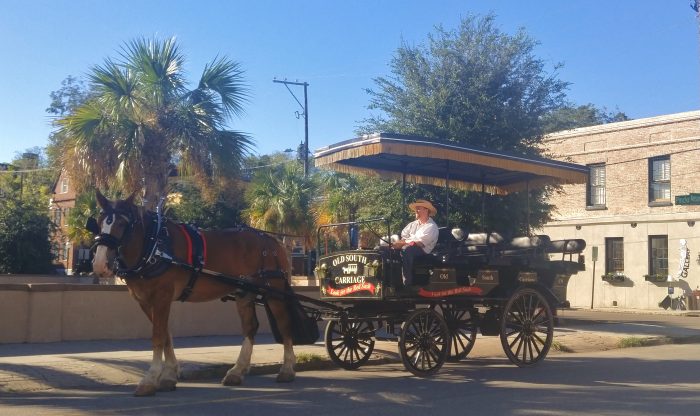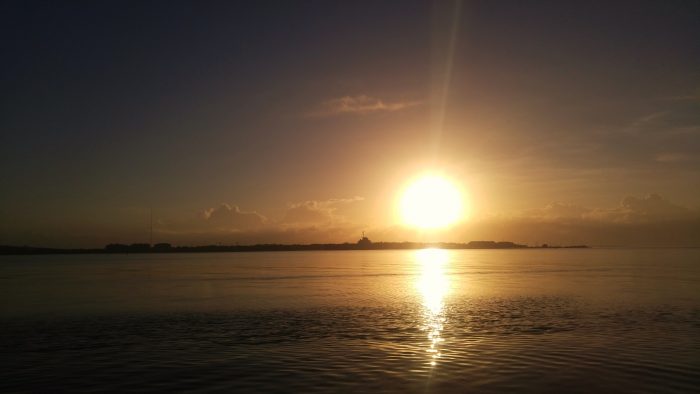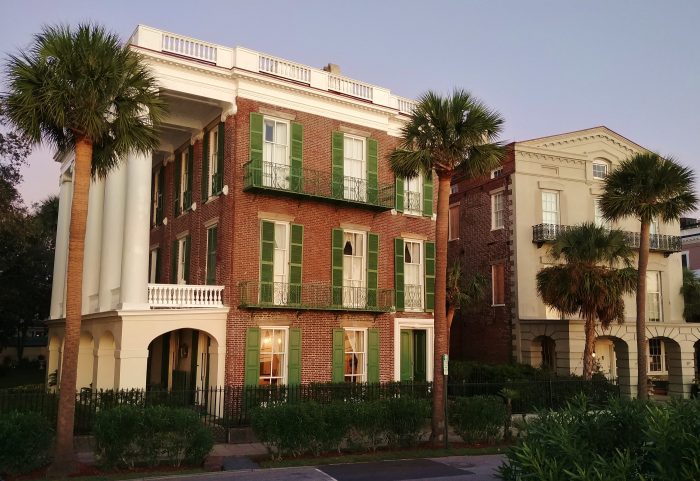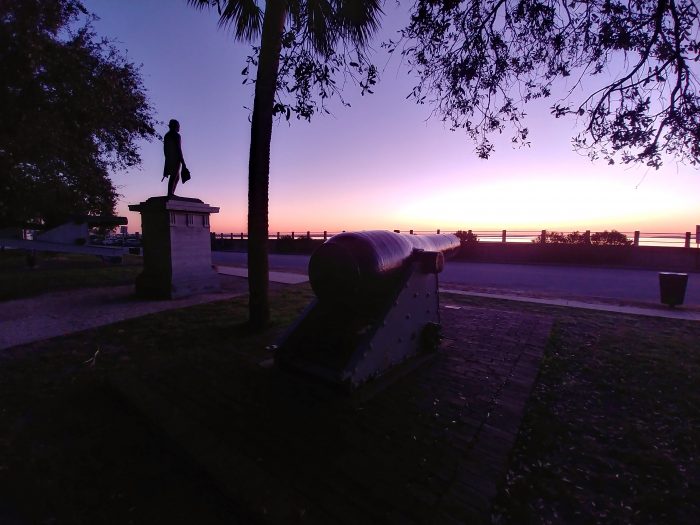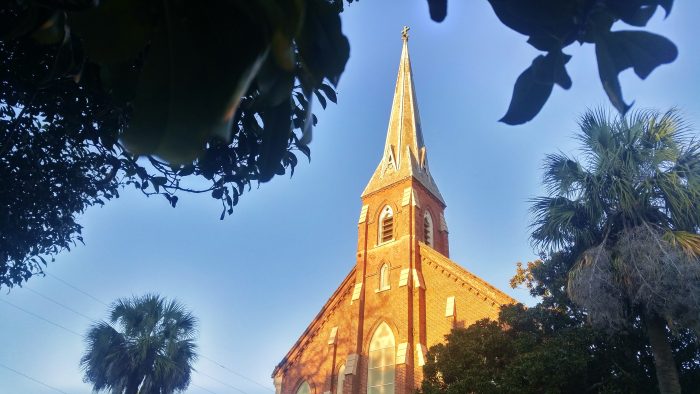The details of Charleston all come together to create one of the most beautiful cities in the world. This wonderful window, shutters and iron fence can be found on Anson Street.
Charleston Lighthouse
The Colonel John Ashe House is one of the most beautiful on South Battery. Here the sun helps it turn into a wondrous lighthouse.
Stoll’s Alley
One of the charms of Charleston are the little alleys that intersect the historic peninsula. Here Stoll’s Alley is a quick and beautiful cut-through from Church Street to East Bay.
The Compromise House
This house on East Battery is one of the most photographed in Charleston. The popular explanation for why one side is rounded and the other is squared is that the husband and wife who built it could not agree on a design. So one designed one half, the other designed the other half. Thus, it is called the “Compromise House.” The true story, however, seems to be that during a renovation about 40 years after it was built, the owner decided to simply mix two styles of architecture. An interesting footnote to the history of the house is that during World War II, John F. Kennedy had an office in this house while serving as a naval officer — before heading to the Pacific as the commander of PT109.
Haint Blue
The color of the ceiling of these Charleston porches is called “Haint Blue.” It is believed that it will keep the “haints” (spirits of the dead) from hanging out in that house.
Carriage Tour
One of the great ways to see Charleston, and learn about the city and its history, is to take one of the carriage tours.
Sunrise Over The Bonhomme Richard (Well, Sort Of)
Looking across Charleston Harbor at the sun rising over the USS Yorktown (CV-10), which was originally supposed to be named The Bonhomme Richard. She was renamed during contruction to honor the USS Yorktown (CV-5), which was sunk during the Battle of Midway.
Roper House
This incredible house on East Battery, named after Robert William Roper, is one of the best examples of Greek Revival architecture in the United States.
General Moultrie
The statue honoring General William Moultrie, a hero of the Revolutionary War, has a spectacular view of the rising sun each morning in Charleston from its perch in White Point Garden.
Holy City Steeple
This Charleston steeple looks a bit like it should be heading to the International Space Station, but on earth it is actually St. Patrick Catholic Church on St. Philip Street.
- « Previous Page
- 1
- …
- 113
- 114
- 115
- 116
- 117
- …
- 188
- Next Page »
